Balog de Manko Bük
| Balog de Manko Bük Mankóbüki Balogh Balogh v. Mankobück | |
|---|---|
| Hungarian nobility | |
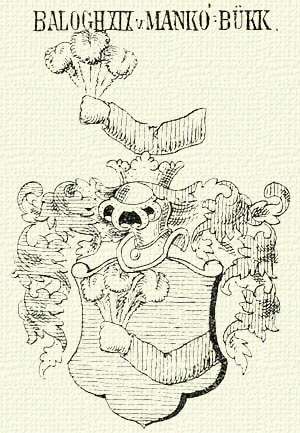 | |
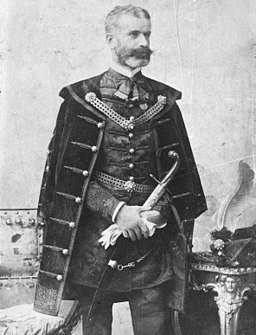 | |
| Country |
Kingdom of Hungary, Austrian Empire (1804 - 1867) Austria-Hungary (1867 - 1918) |
| Place of origin | Sopron County (region), Kingdom of Hungary |
| Founded | 1552 |
| Founder | Gáspár Balogh de Mankó Bük |
| Connected families |
Madách de Sztregova et Kelecsény Freiherren Wagner von Wehrborn |
| Distinctions |
Order of the Iron Crown (Austria), Zivil-Verdienstkreuz, Military Merit Medal (Austria-Hungary) |
| Estate(s) | Mesterházy castle |
Balogh von Mankobük or Balog de Manko Bück in its present Germanized form, mankóbüki Balogh in Hungarian,[1] is a noble family from the Habsburg Monarchy,[2][3] originally from the region of Sopron County,[1] which belongs to the historical Hungarian nobility.[4][5][6]
The mankóbüki family were landowners at the former village of Alsóbük, Mankóbük, Kingdom of Hungary (today Bük, Hungary). Their origins date back to the beginning of the Habsburg rule of the Kingdom of Hungary, which was then also divided in the Eastern Hungarian Kingdom and Ottoman Hungary, and are documented in the area of Bük since 1552.[7]
The Habsburg Monarchy was later transformed in 1804 to the Austrian Empire, after the Ausgleich, from 1867 onwards Austria-Hungary came to existence, and collapsed after the Austro-Hungarian defeat of World War One.
Family history

The family had both a marked military and legal or administrative character throughout generations. Male members mainly either served in the Austrian Imperial Army[8][9][10] and the subsequent Austro-Hungarian Army,[11] or dedicated themselves towards the affairs of state, primarily through judicial positions of legal or administrative nature, in either governmental institutions of the Habsburg Monarchy or Hungarian Ministries.
The first written mention of a Manko Bük family is recorded in 1351 as "Monko de Byky"[12] and later in the person of "Johannes Manko de Byk"[13] in 1451. The published genealogical family tree of the "Balogh Mankóbüki" traced their roots back to the early 1600s, namely with the brothers Lörinez (1618) and János (1620), even though the jurist Gáspar Balogh de Mankóbük had been documented in present-day Bük back in 1556.[7]
They left Bük in the late 18th century due to the military postings of the head of the family, captain Josef Balog de Mankó-Bük (1766 in Bük - 1842 in Vienna), who fought during the Napoleonic Wars for the Austrian Empire.
The captain had been stationed in 1795 in Kőszeg, which was the seat of the district administration, as lawyer of the Transdanubian District Board (Kőszegi Kerületi Táblanak).[1] This institution had been founded in 1724 and was responsible for Nobles´s property, inheritance and other financial matters.[14] Their military life took them through Temeswar and Karlsburg in the Principality of Transylvania, (today in Romania), as well as Brünn and Olmütz in Moravia (today in the Czech Republic). The captains oldest son, Oberleutnant Josef Balog v. Manko-Bük (1801 in Temeswar), lived in Fürstenfeld (Styria)[15] and Königsdorf[16] during his active military career.[17]
The family established itself in Vienna around 1837 and in Budapest around 1848.
Because of the death of Rittmeister (Cavalry Captain) Karl Balog de Mánko-Bük (1808-1849) during the Hungarian Revolution of 1848 his son was raised by his wife's family (Madách de Sztregova et Kelecsény) at castle Madách (today in Slovakia).
The German language dominated the Habsburg Monarchy. The Hungarian language became official in 1836 in Kingdom of Hungary, however before Latin was used in the official documents.
French was later adopted as mother tongue by the family branch that settled in France after World War II.
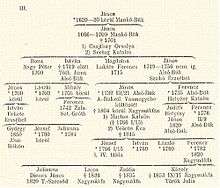
Coat of arms

The first published coat of arms is found in the volume "Der Adel von Ungarn samt den Nebenländern der St.Stephanskrone" (Nobility of Hungary and the Lands of the Crown of Saint Stephen) of the renowned German-speaking heraldic works "Siebmachers Großes Wappenbuch" of 1893, printed in Nürenberg. It shows a red dressed arm with three Ostrich Feathers in the fist and appears under the Germanized name Balogh v. Mankó Bükk.
A later coat of arms was published in "Liber Armorum Hungariae" by the foreign minister of Austria-Hungary Count Gyula Andrássy in Budapest in 1913. This version is richer and more colourful, three Ostrich Feathers stand now on their own as well as on the crown at the top, the red dressed arm holds a sword in its fist instead of the feathers it held previously. Green, blue and yellow are used additionally, and the family name appears with the Latin suffix "de" instead of the Germanic "von" as Balogh de Mankóbük.
Both versions are good examples of Hungarian Heraldry under Habsburg rule.
Castle Potypusztán - Mesterházy kastély
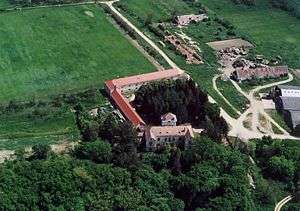
The Hungarian report "KASTÉLY ÉS KÚRIATULAJDONOS CSALÁDOK. VAS MEGYÉBEN" or "Castles/Manor houses and the families they belonged to in the Vas County" is a detailed list of existing and former or demolished castles and mansions in the historic region of the Iron County, in the western part of the Kingdom of Hungary.
The Balogh Mankóbüki were owners of the castle Potypusztán, also known as castle Mesterházy (Mesterházy kastély), in the village of Csehimindszent from 1915 until its expropriation in 1945. The castle had belonged to the Mesterházy noble family since 1871 but came to the possession of Aladár Balogh de Manko Bük after his marriage with the widow of Gyula Mesterházy (1869 - 1914) in 1915. It was renovated in 1929.
The castle was originally built by the Croatian Counts of Festetics de Tolna (Hungarian princes since 1911) around 1782. It was later acquired by the zalabéri Horváth noble family in 1839 and then by the Mesterházy´s in 1871 until 1914.
The castle was taken from the Balogh de Mankobük family and nationalized by the Hungarian government in 1945. It was then used by the state for different public activities during the following decades.[18]
Anton Balog de Manko-Bük
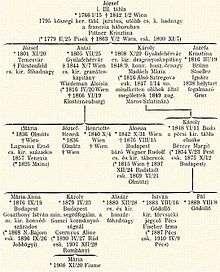
Born in Karlsburg (25 July 1805), Principality of Transylvania, Austrian Empire (today Alba Iulia, Romania), as son of Captain Josef Balog de Mankó-Bük (1766 - 1842).
He attended the Theresian Military Academy at Wiener Neustadt, near Vienna, in 1817. He became Fähnrich or Officer Candidate on 21 October 1825 at the Hungarian k.k regiment "Erzhog Albrecht" n.44. In 1830 he ascended to Lieutenant, was promoted to Oberleutnant in 1834 and to Hauptmann (captain) on 1 January 1836.[19]
He was Adjutant of "His Excellency / Seiner Exzellenz" Feldmarschall-Leutnant Baron Lauer.
He married Aloysia v. Widemann (Vienna 1816 - Klosterneuburg 1866), daughter of an Hauptmann-Auditor, with whom he had four children. Anton (Hung. Antal) Balog de Manko-Bük died on 7 October 1844 in Vienna.[20]
Aloysia Balog de Manko-Bück
Born in Vienna (31 October 1842) and died in Budapest (15 August 1876). She was the daughter of Captain[21] Anton Balog de Manko-Bük (1805-1844) and spouse of the General-Major Rudolf Freiherr Wagner von Wehrborn (Vienna 1815 - Radstadt 1897), who was a knight of the Military Order of Maria Theresia.[22] They married in Olmütz (Moravia) on 21 June 1869.
German princes of both the House of Glücksburg (Schleswig-Holstein) and the House of Lippe are direct descendants of the marriage between the first Baron Wagner von Wehrborn and Aloysia Balog de Manko Bück.[23]
Károly Balogh de Mankobük
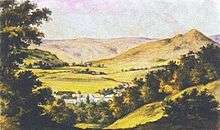
Born in Buda (11 June 1848) and died in Pécs (9 April 1920), Károly was a judge and later president of the Royal Court (Tabula Regia or Király Tábla in Hungarian) in Pécs as well as a knight of the Order of the Iron Crown.[24]
He was the son of Karl Balog de Mánko-Bük (1808-1849), captain at the Imperial Dragoons cavalry Regiment "König Ludwig von Bayern" in the Austrian Imperial Army, and his wife Mária Madách de Sztregova et Kelecsény (1816-1849), daughter of an imperial and royal chamberlain and landowner.
His father had been wounded in Transylvania during a major battle in Temesvár, fighting in the Hungarian Revolution of 1848, so his mother went to assist him. Károly became an orphan at barely the age of one when both his parents were murdered by armed Romanian peasants in the summer of 1849, during their journey back home. At the time of the tragedy he had been left behind with his grandmother at the Madách castle in Alsósztregova (present-day Dolná Strehová, Slovakia).
He was raised by his uncle, the famous writer Imre Madách, who took him in his care and raised him together with his own son, Aladár, at the Madách family castle. Traits from that common family history can still be found today in the Slovak National Museum since the department of Hungarian Culture in Slovakia is based both in Bratislava and in the Madách Castle.[25] Both the garden and the castle are open to the public as part of the Slovak National Museum permanent exhibition.
He studied law in Pressburg, (Pozsony, today's Bratislava) and worked for the Ministry of Justice, eventually becoming president of the Royal Court in Pécs.
He had artistic pursuits in his spare time, mostly through painting and poetry. He illustrated tales and children´s books of the Hungarian novelist Kálmán Mikszáth de Kiscsoltó as well.
While he served in the Austro-Hungarian occupation of Bosnia and Herzegovina in 1878, he captured the essence of war in Sarajevo, through a number of paintings and drawings, which were published under the name of: Krieg-Bilder-Skizzen aus dem Bosnisch-Herzegovinischen Occupations-Feldzug, 1878 von der Marschlinie Brod, Sarajevo, Visegrad bis an den Limm in Wien (1879).[26]
He married Margaret Bérczy de Gyarmat, daughter of the notorious poet and editor Károly Bérczy de Gyarmat, in Budapest (12 October 1875). In 1912, at the age of 64, he wrote his memoirs[27] "Gyermekkorom emlékei" or "Memories of childhood".
He was awarded the Imperial Order of the Iron Crown Second Class (Kaiserlicher Orden der Eisernen Krone) for his civil merits in 1914.
Dr.Károly Balogh de Mankobük Jr.
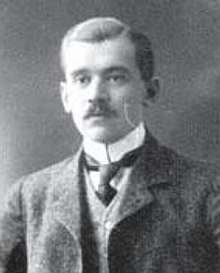
Born in Budapest (23 June 1879) and died in Balassagyarmat (24 April 1944).
He was a Minister Counsellor at the Hungarian ministry of interior and a literary historian and translator for the Hungarian government. He had also been a judge and member of the government of the Hungarian city port of Fiume until World War One.[28]
He was the eldest son of Károly Balogh de Mankóbük and Margaret Bérczy and was married to Aline Csernyus de Kökeszi (1890-1985).
After working as a judge in the Szécsény and Balassagyarmat area from 1903 to 1907 he started working in the government of Fiume as ministerial draftsman at the maritime authority of the Governorate from 1907 to 1911. Fiume, (modern Rijeka, Croatia), was an autonomous entity under jurisdiction of Hungary known as "Corpus separatum".
He later became the Fiume ministerial regency draftsman, assistant secretary, and then secretary (1911-1915) until he had to serve in the Austro-Hungarian Army at a combat zone, due to World War One (1915-1918) .
He went into hiding after the collapse of the Austria-Hungary (1918) and later took part in the liquidation of the Fiume governorship (1919-1920).
He settled down in Pécs (1923-1934) where he was interim head of the University of Pécs Elisabeth library (1927-1930). He then became president of the Translation Department, since he had had Ministerial Adviser rank from 1920-1943, at the Hungarian Ministry of Interior or Belügyminisztérium.
He was a member of the prestigious Kisfaludy Society since 1942 specialising in the cultural history of ancient Rome and medieval German poetry and wrote for the main German-speaking newspaper in Hungary, the Pester Lloyd from Budapest.[24]
He was awarded the Horváth Endre price posthumously in 1989 by the city of Balassagyarmat.
Aladár Balog de Mankobük
.png)
Aladár was born the 28. December 1880 in Budapest and became a cadette at the 11.Husaren-Regiment in 1898. By 1906 he was already Oberleutnant and Rittmeister by 1914.[29][30][31]
He served in the Austro-Hungarian Army throughout the entire First World War under the command of the Prince of the Kingdom of Bulgaria, Kyrill von Bulgarien Fürst von Preslaw as well as under the Heir apparent to the Bulgarian throne, Major Boris Kronpriz von Bulgarien Fürst von Tirnowo until 1918.
He fought during the Balkan Wars, in 1912/1913 as well. By 1918, the end of the War and the dissolution of his regiment, he had been distinguished with both Bronze and Silver Military Merit Medals among other recognitions.[32]
He married Angela Nagy, the widow of Gyula Mesterházy, in 1915.
Dr. Pál Balogh de Mankobük
Dr. Mankóbüki Balogh Pál (i.e. Paul) was born in Gödöllő (8 August 1889).
He obtained his degree in political science in Budapest and joined the financial clerk from 1924 to 1934. In 1934 he joined the Ministry of Defence, where he addressed issues such as care for war orphans, child protection and social security.
In 1945 he transferred to the Ministry of Social Welfare where he was head of the military care management department and 1946 became deputy head of the same department.
At the same time he actively participated in the resistance movement known as the Magyar Közösség, a secret organization operating along the lines of the Freemason movement, but with a strong Hungarian nationalist character. Their goal was to get their members into influential positions in the state administration and economical sphere.
He worked at the Ministry until his retirement in 1949.He remiained active in the private sector working for Insurance companies such as the french insurance company at the Fonciére-palota in the Andrássy avenue and at the State Insurance Company.
In the summer of 1951 the leadership of the then communist Hungarian People's Republic decided to deport the so-called "undesired persons" (former high-ranking civil servants, soldiers, landowners) from Budapest.
Dr.Pál and his family had their home in Budapest (Zugló district) expropriated and were deported to the village of Gyulaháza, which they could only leave with police permission, under the accusation of "kulak" or "enemy of democracy".[33]
Balogh - RFID Leader since 1978
The BALOGH GROUP has its headquarters in Paris and is the French leader company in the development and manufacturing of contactless identification systems, offering the most advanced RFID technologies in the industry.
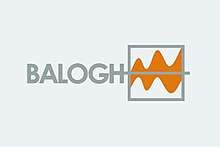
It was founded in 1958 by Paul and Claire Balogh de Manko-Bük in Paris, who had left Hungary after the Second World War and settled in France, starting out manufacturing Inductive Proximity Sensors, which then lead to the development of Radio Frequency Identification (RFID) in 1978. Since then the BALOGH Group has expanded globally with the creation of BALOGH USA in 1988 and the creation of BALOGH INTERNATIONAL in 1990.[34]
Nowadays it has three research and development facilities, one in Paris, one in Toulouse (France) and one in Detroit, Michigan (USA). All three also serve as production facilities, in addition to the one in Normandy.
The company operates globally, mainly in Europe and the United States, having applications in a variety of industries, such as Automotive, Food Processing, Pharmaceutical, Transportation, Railways or Aircraft.
The former CEO, Etienne Balogh de Manko-Bük, born in 1962, joined 1987 and became president in 1994. He holds a business and marketing degree from the IDRAC Ecole supérieure de commerce and HEC Management. Since 2016 he is International Sales Director for Rail Solutions at TagMaster.[35]
In September 2016 BALOGH was acquired by the Swedish multinational Tagmaster in order to expand in southern Europe.[36][37]
TagMaster is a public company and its shares are traded on the First North Stock Exchange in Stockholm, Sweden.[38]
Other notable members
- Lajos Balogh mankóbüki (1812-1850): evangelical pastor.
- Dr.jur. István Balogh mankóbüki (Gödöllő, 1883): Lawyer and academic in Pécs.
- Prof. Lajos Balogh (Bük, 1933): Hungarian linguist and University Professor at the Eötvös Loránd University of Budapest. Bálint Csűry Medal (1977) and Dezső Pais Prize (2006).
- Dr. med. Charles Balogh de Manko-Bük (Paris, 1957): French maxillofacial surgeon in Grenoble.
References
- 1 2 3 KEMPELEN, Béla (1911). Magyar Nemes Családok. Budapest.
- ↑ FRÖLICHSTHAL, Georg Freiherr von (2008). Der Adel der Habsburgermonarchie im 19. und 20. Jahrhundert. Bauer & Raspe. p. Nr.938.
- ↑ Frölichsthal, Dr. Georg (1997). "Der österreichische Adel seit 1918". Deutschen Adelsblatt. 11: 284–287.
- ↑ CSERGHEÖ & NAGY, Géza & Iván (1893). Der Adel von Ungarn samt den Nebenländern der St.Stephanskrone. Nürnberg: SIEBMACHER´s grosses Wappenbuch.
- ↑ NAGY, Iván (1857). Magyarország Családai: Czimerekkel És Nemzékrendi Táblákkal (PDF). Pest: Elsö Kötet.
- ↑ NAGY, Iván (1868). Magyarország Családai: Czimerekkel És Nemzékrendi Táblákkal. Pest: Kiadja Ráth Mór.
- 1 2 Soproni Szemle. . I. ÉVFOLYAM 3.
- ↑ Streffleurs militärische Zeitschrift. Wien. 1831.
- ↑ Militär-Schematismus des Österreichischen Kaiserthumes. Wien: k.k Hof- und Staatsdruckerei. 1838.
- ↑ Miltär- Schematismus des Österreichischen Kaiserthumes. Wien: k.k Hof- und Staatsdruckerei. 1840.
- ↑ Ranglisten des Kaiserlichen und Königlichen Heeres 1918. Wien: K.K. Hof- und Staatsdruckerei. 1918. pp. 993, 1287.
- ↑ "SAVARIA BULLETIN DER MUSEEN DES KOMITATS VAS". Hungaricana. DIREKTION DER MUSEEN DES KOMITATS VAS.
- ↑ SOPRON SZABAD KIRÁLYI VÁROS TÖRTÉNETE. Sopron: SZÉKELY ÉS TÁRSA KÖNYVNYOMDÁJA. 1924.
- ↑ "Exploration of former and current administrative buildings". KŐSZEG.
- ↑ Schematismus des Herzogthums Steyermark für das Jahr 1833. Graz: Andreas Leyram'schen Erben. 1833. p. 135.
- ↑ Csaba, Andor (1999). VI. Madách Szimpózium. Budapest–Balassagyarmat: Madách Irodalmi Társaság. pp. 66–69.
- ↑ Militär-Schematismus des Österreichischen Kaiserthumes. Wien: k.k Hof- und Staats-Druckerey. 1822. p. 402.
- ↑ "Mesterházy kastély, Potypuszta" (PDF). csehimindszent.hu.
- ↑ Die Zöglinge der Wiener-Neustädter Militär-Akademie von der Gründung des Institutes bis auf unsere Tage. Wien: Druck und Comissions-Verlag von F.B. Gritler. 1870. pp. 465–466.
- ↑ Österreichische Militärische Zeitschrift (Grosses Heft ed.). Wien. 1845. p. 111.
- ↑ Militär-Schematismus des österreichischen Kaiserthums. k.k Hof- und Staats-Aerarial-Drückerei. 1845.
- ↑ Freiherr von Gablenz, Richard (1908). 1848-1908. Maria Theresien-ordens ritter der k.u.k. kavallerie. Wien: R.Lechner.
- ↑ "Holstein". The Heirs of Europe.
- 1 2 VAS, Agnes. NÓGRÁD HONTI-PORTRAIT of IMRE MADÁCH City Library Local History (PDF). HELYISMERETI KÖNYVTÁROS.
- ↑ "Slovak National Museum". www.snm.sk.
- ↑ "Verhandlungen der k.k geologischen Reichsanstalt" (PDF) (N.17). 1879.
- ↑ Balogh, Károly (1912). Gyermekkorom emlékei (PDF).
- ↑ Zonda, Tamás. BALASSAGYARMAT JELES POLGÁRAI (PDF). p. 33.
- ↑ Schematismus für das kaiserliche und königliche Heer und für die kaiserliche und königliche Kriegs-Marine für 1898. Wien: k. k. Hof- und Staatsdruckerei. 1897.
- ↑ Schematismus für das Kaiserliche und Königliche Heer und für die Kaiserliche und Königliche Marine für 1908. Wien: Druck und Verlag der K.K Hof- und Staatsdruckerei. 1907.
- ↑ Schematismus für das K.u.K Heer und für die K.u.K Kriegsmarine für 1914. Wien: Druck und Verlag der k.k Hof- und Staatsdruckerei. 1914. pp. 640, 714.
- ↑ Ranglisten des Kaiserlichen und Königlichen Heeres 1918. Wien: K.K. Hof- und Staatsdruckerei. 1918. pp. 993, 1287.
- ↑ Kis-Kapin, Róbert. "Budapesti kitelepítettek Gyulaházán 1951−1953 között".
- ↑ "BaloghUSA: Balogh History". www.baloghusa.com.
- ↑ "TagMaster Company Management". www.tagmaster.com.
- ↑ "TagMaster intent to acquire Balogh". www.aktiespararna.se.
- ↑ "Tagmaster concludes BALOGH group acquisition". www.securityworldmarket.com.
- ↑ "TagMaster: Our History". www.tagmaster.com.